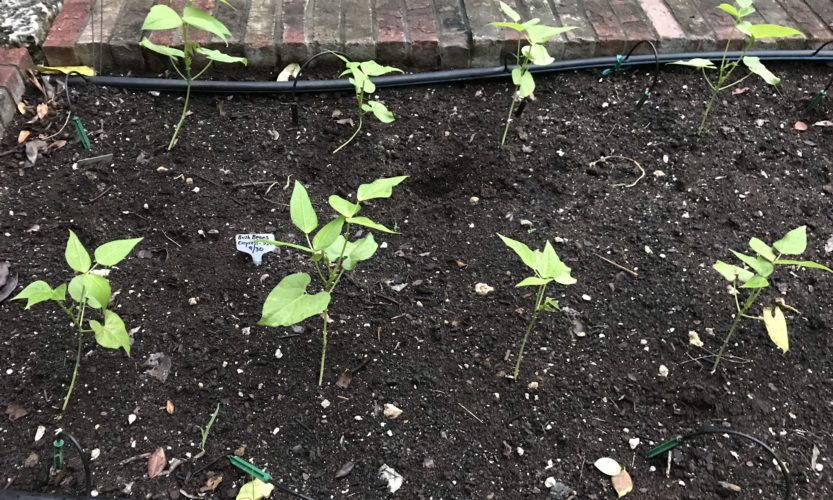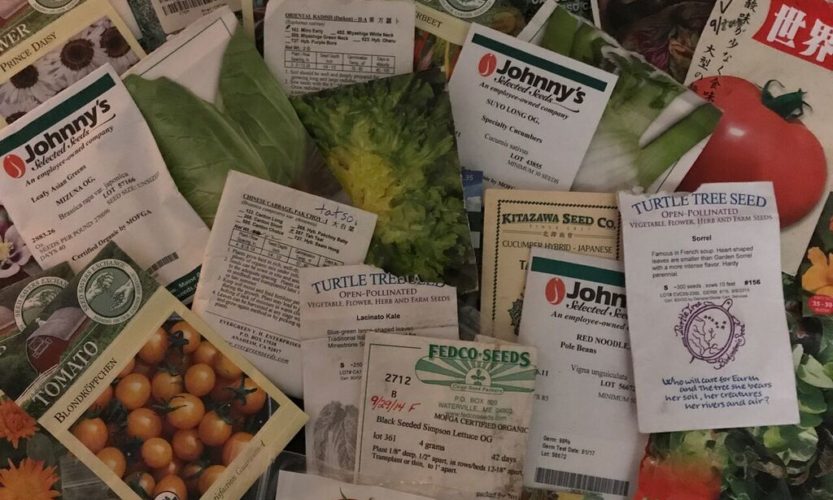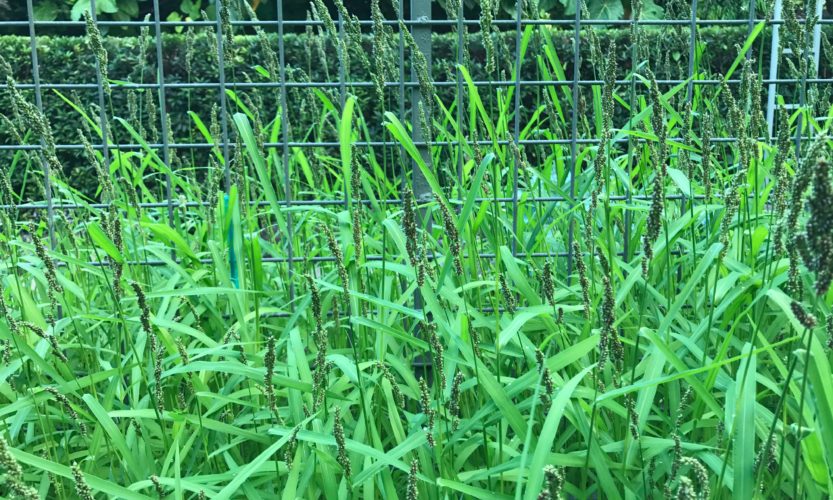Seedling City – Where It All Begins

We’ve described how we prepare the soil in our beds for planting – now it’s time to discuss how we get our plants started. Because we are in South Florida, our prime time for cultivating seedlings is in the fall.
We basically have three methods for starting our plants in the garden:
- Planting seeds in flats for transplanting seedlings later
- Planting seeds directly into the garden beds to sprout there
- Buying small starter plants to put directly into the beds
We definitely prefer to start our plants from seed, for a number of reasons. First, when you purchase seeds as opposed to starter plants, there’s a much greater variety to choose from. We also like cultivating them from their very beginnings in our own organic soil and supplements. And it’s much less expensive than buying plants. There is also the chance of introducing pests and/or diseases that are brought in on starter plants. Last but not least, who doesn’t love the hands-on experience and good feeling of engaging in a plant’s growth every step of the way?
How Do We Prepare the Soil for Planting?

Not exactly an exciting or pretty picture right? But it’s just perfect, because this is how much of our garden looks as we prepare the soil for the coming season. It is a serious endeavor, as we have learned from experience that a successful garden is more dependent than anything upon having really good soil. Not only does it support the growth of our plants, but determines their nutritional value as well. And, good soil is a pest deterrent, because poor soil produces weak plants that are more vulnerable to pests and actually attract them. Also, the beneficial microbes in good soil help to prevent plant disease.
Yesss!! Fall Planting – Getting Started!

So it is finally time to get some fall planting started – well, sort of. We are still experiencing weather conditions here in South Florida that are not conducive to our typical October plantings. Patience has been the keynote so far this season – we thought the late September (into October) rains would be over last week and we could start planting in the beds, as well as more seedlings in flats, but lo and behold it’s still raining! We did go ahead and put a few things in beds and for the most part they are doing fine. The seeds in flats are not faring as well as it’s just too wet for them. We’re hoping this coming week is the last of the rainy season before we’ll have not only mostly sunny days, but a little bit of cooling off as well. It’s been a wild ride with the weather this past two months, and we’re hopeful for some “normalcy” settling in soon.
It’s Time to Order our Fall Seeds!

Fall is a very exciting time for us as we begin our new planting season. Buying seeds is of course one of the most important tasks we undertake, and the process has been refined over the years. We have many beds to fill, many tastes to please, and our South Florida weather and conditions to take into account. No, we cannot grow Brussels sprouts and asparagus here (though I have to confess we’ve tried!). But we can grow so many varied crops that it was hard to know where to begin when we first started gardening. Now it’s become kind of routine – we have our favorite seed companies and we pretty much know what we can and would like to plant.
Compost It!

Compost is one of the main keys to a healthy, thriving organic garden. We used to be able to buy some really incredible ready-made organic soil, but no more. So a few years back, we set out to learn how to create our own, and found how essential it was to produce a steady supply of compost! Our two main resources, where we learned the most, was (my gardening bible!) How to Grow More Vegetables by John Jeavons, and the University of Florida’s Agricultural Extension’s resources, especially this article: Compost Tips for the Home Gardener. We learned that composting isn’t about constantly throwing your scraps into a pile whenever you had some; it is a careful layering technique in a designated area with specific dimensions and scheduled maintenance. We had a lot to learn, but now that we’ve got the hang of it, we enjoy the whole routine (although the saved-up kitchen scraps can be nasty!) and especially using the compost to enrich our vegetable garden – nothing like that rich, dark compost that we know is chock full of nutrients!
Summer Cover Crops

In South Florida our “off-season” is June thru September as the summer months are too hot and humid for most plants to thrive. So for us, this is mainly soil preparation time! After completing the harvesting of our Spring plantings, we allow the soil to rest for a few weeks and then begin planting our cover crops. Of course, we research and plan ahead during the Spring so we have our seeds ready.
